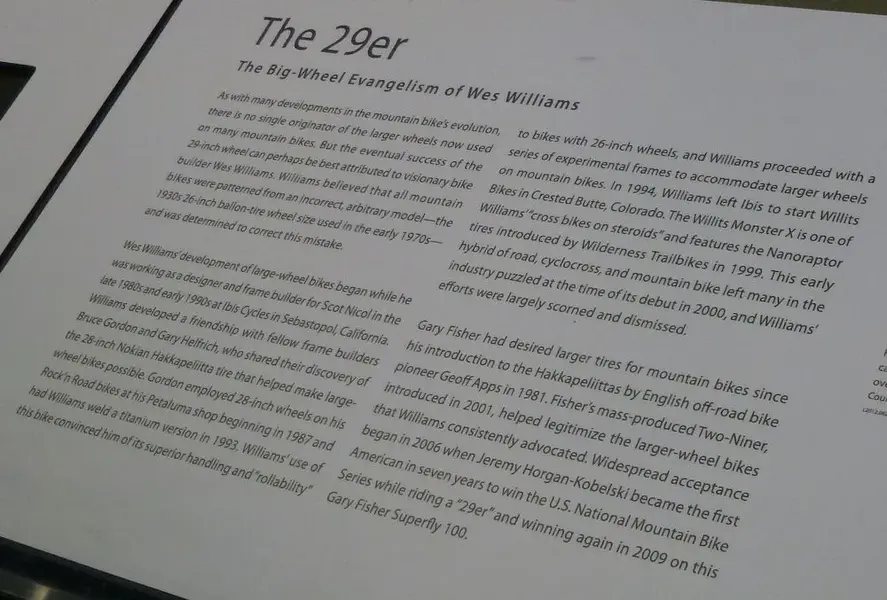kaiser":11fqxkp3 said:ultrazenith":11fqxkp3 said:As part of my work I also enjoy thinking way outside the box. Let me throw this one to the people with more knowledge and experience of bike and riding 29ers: What is it that makes the 29.0 inch wheel the perfect size for obtaining the benefits of larger wheels, and bottom bracket height)? Surely if 29ers give much better speed, why not go to 30" wheels to get even more of the same benefits? I don't doubt that people's experiences with 29ers are very real, but it strikes me that the marketing people have simply plucked the number 29 out of thin air.
And if even short riders can handle riding 29ers, wouldn't/shouldn't super tall riders like me be able to handle 30-31" wheeled MTBs? How cool would that be ...
29ers came about in much the same way as 26ers, using what was available at the time. 29" is the same size as 700c and at the start these rim were used in lieu of any purpose built jobs. * In the late 90's Wes Williets (or maybe Don Walker) was convinced that the bigger wheel size had benefits and set about trying to get the first 29er tyre made, eventually with the help of Gary Fisher WTB produced a tyre and set the ball rolling. 29er have been around for quiite a while now and it might be a surprise to some to know that they were not born out of an evil corporate emperors new clothes type initiative.
*I've not looked checked this for this post but its along these lines, the main players are correct though.
Indeed, like my 2002 Fisher

